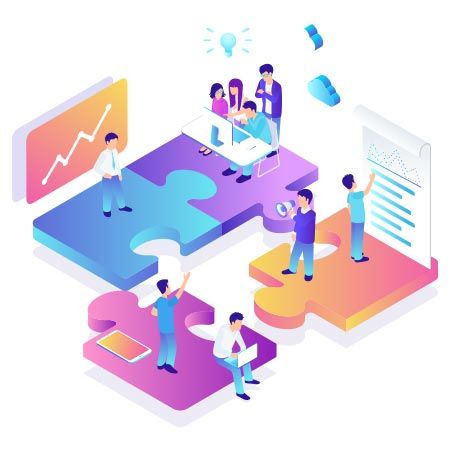Integration
Technology and implementation
We integrate with lots of ERPs and Accounting systems












Overview
While our vision and focus is based on delivering market-leading business functionality we know that our products are only as good as the technology driving them. We take pride in delivering sound, stable, high-quality, and high-performance software products using technology that enables quick deployment and straightforward integration with other systems.
Our product
Sourcing Force’s products are built to be extremely flexible, scalable, and easily deployed. To meet technical objectives, our solutions are completely web-based, with no requirement for plug-ins and with clearly defined, standards-based interfaces.
We leverage the best development technologies from Microsoft to maximize functionality and performance of our products while also ensuring our products can be easily integrated into our customers’ technical environments and with their other systems.

Technology Overview
Built on a solid enterprise grade architecture that allows organizations to integrate our software with their back-end systems, including ERP, CRM, E-Procurement, Document Imaging, and Legacy systems. Designed as an “n” tier, distributed, collaborative application that is truly a zero-footprint solution accessed by a browser.
There are no plug-ins or applets that reside on the client desktop. Leverage industry-leading platforms for each architectural layer (application server, web server, database server).
Integration Framework
XML based integration framework allows for seamless integration with other company back-end systems (e.g., ERP, CRM, E-Procurement, Document Imaging, and Legacy systems). Designed to easily integrate with major ERP systems (e.g., PeopleSoft, SAP, Oracle, JD Edwards, BAAN, etc.) using industry approved middleware products or API’s.
User configurable business rules and workflow, fields (including new user defined fields), screen field / label naming, and other like features allows for product configuration by the customer instead of product customization (which has a negative affect on maintenance costs and future upgrades). Provision of core data dictionary allows for external reporting using third party tools. Also allows for easy integration to company data warehouses and business intelligence data marts.


Performance and Scalability
Use of clustering technology allows for virtually unlimited scalability and high availability of both hardware and software components.
Object oriented approach and use of modular components allows for superior performance. Our design, based on zero footprint architecture, ensures fast and consistent performance in addition to high reliability and robust application and data integrity. Enterprise grade architecture and design allows for real-time interfaces with back-end systems, using a methodology and approach that provides reliable and superior performance.
Training
1 – Comprehensive on-line user guides allow for self education as well as instructor led training.
2 – Methods include train-the-trainer, web based training, in-class sessions, and self tutorials.
3 – Our on-line training manuals allow for company specific processes and procedures for each key component (e.g., how to create new contracts within company XYZ). This flexibility allows companies to have specific help on how their company handles a particular process, thereby integrating business processes and workflow within the Sourcing Force product guides.
4 – The flexible on-line guides permit users to enter FAQ related entries specific to each area within our products.

Conversion
1 – Proven processes to migrate existing data into Sourcing Force using conversion data maps, imaging approaches, etc.
2 – Validation and reconciliation processes in place to ensure converted data matches to pre-Sourcing Force systems.
3 – Archival process allows for unique schemes based on types of data.

Implementation Approach
Stage 1: Product fit assessment
Meet with customer stakeholders, review business requirements, and demonstrate “fit” level (e.g., complete fit, partial fit, product enhancement, business process improvement). Our approach is to customize our software and make it extremely configurable. Most of our implementations with the standard version demonstrate a greater than 90% product fit. When changes are required, we often make product enhancements which benefit all of our customers.
Stage 2: Integration to company systems
Define interfaces; update processes (e.g., batch, real-time, etc.). Define conversion approach and impact.
Stage 3: Product configuration
Work with users to go through the various configuration panels, which enable them to make future changes on their own; Any product enhancements are developed during this stage; Interfaces as well as conversion routines are built and tested; Production and Test environments are configured and set-up.
Stage 4: User acceptance testing
Finalize test scripts; Fix period; Conversion verification
 English
English Français
Français